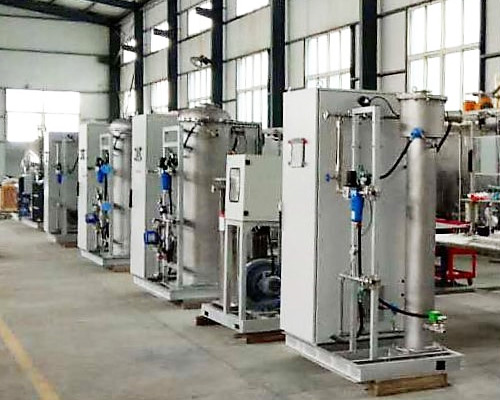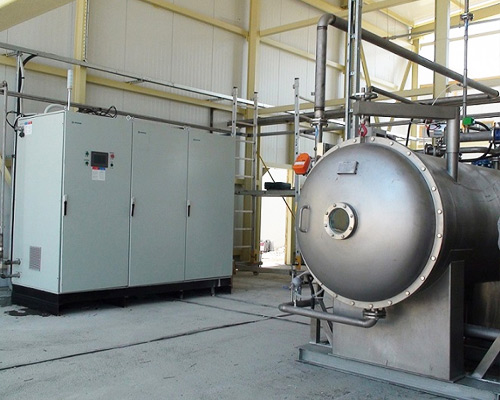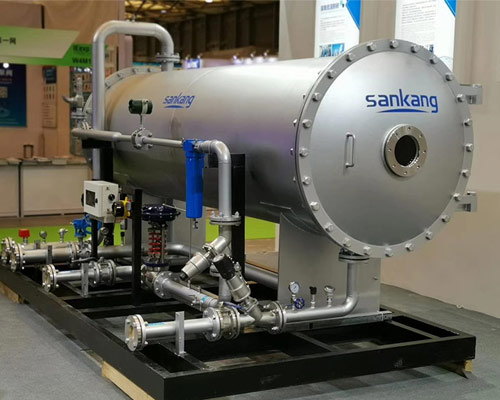Array
(
[id] => 4176
[site_id] => 1
[project_id] => 478
[cate_id] => 793
[thumb] => Array
(
[id] => 3913
[cate_id] => 1
[folder] => res/202504/10/
[name] => e99982aa64eeb805.jpg
[ext] => jpg
[filename] => res/202504/10/e99982aa64eeb805.jpg
[ico] => res/_cache/_ico/39/3913.jpg
[addtime] => 1744274307
[title] => Ozone-Generators-for-Water-Treatment
[attr] => Array
(
[width] => 500
[height] => 400
)
[note] =>
[session_id] =>
[user_id] => 0
[download] => 0
[admin_id] => 1
[mime_type] => image/jpeg
[gd] => Array
(
[auto] => res/_cache/auto/39/3913.jpg
[thumb] => res/_cache/thumb/39/3913.jpg
)
)
[content] => In the modern era of water purification, ozone generators have emerged as a powerful tool, revolutionizing the way we treat water. Their ability to effectively disinfect, oxidize contaminants, and improve water quality has made them indispensable in various sectors, ranging from municipal water supplies to industrial processes. However, to harness their full potential, understanding the intricate technical requirements is of paramount importance.
1. Ozone Production Capacity
The foremost technical aspect is the ozone production capacity, typically measured in grams per hour (g/h). This metric dictates how much ozone the generator can produce within a given time frame. For large-scale water treatment plants handling millions of gallons of water daily, a high-capacity ozone generator, capable of churning out hundreds of grams or even kilograms of ozone per hour, is essential. This ensures that an adequate amount of ozone is introduced into the water to combat a wide array of impurities, such as bacteria, viruses, and organic pollutants. In contrast, smaller applications like household water purifiers might only require a generator with a modest output of a few grams per hour, sufficient to meet the daily drinking water needs of a family.

2. Ozone Concentration
Not just the quantity, but also the quality of the ozone matters. The concentration of ozone produced is a critical factor. Expressed as a percentage by weight or volume, it determines the potency of the ozone treatment. In general water disinfection scenarios, a concentration ranging from 1% to 3% might be adequate to neutralize common pathogens and break down simple organic compounds. However, for more complex industrial wastewater treatment, where stubborn pollutants like heavy metals and refractory organics are present, a higher concentration, sometimes up to 10% or more, is necessary. [**]chieving such high concentrations demands advanced electrode designs and precise control of gas flow and electrical parameters.
3. Gas Supply and Quality
The source of gas used in ozone generation plays a significant role. Ozone generators can operate with either air or pure oxygen. [**]ir, being abundantly available, is a cost-effective option for many applications. But it contains approximately 78% nitrogen, which can lead to the formation of unwanted nitrogen oxides (NOx) during the ozone generation process. These by-products not only reduce the efficiency of ozone production but can also pose environmental concerns. On the other hand, using pure oxygen as the feed gas results in a purer ozone output with fewer by-products. However, this requires an additional investment in oxygen generation or storage equipment, such as oxygen concentrators or cylinders. The purity of the gas, regardless of the source, also impacts the performance. Even trace amounts of impurities like hydrocarbons can interfere with the ozone generation reaction and lower the overall efficiency.
4. Cooling Mechanism
Ozone generation is an exothermic process, meaning it generates heat. Without proper cooling, the generator can overheat, leading to decreased efficiency, shortened lifespan, and even potential safety hazards. There are primarily two cooling methods: air cooling and water cooling. [**]ir-cooled ozone generators are simpler and more cost-effective. They utilize fans to circulate air around the components, dissipating heat. This type is suitable for smaller generators and applications where water availability is limited. Water-cooled systems, in contrast, offer superior cooling efficiency. They involve a closed-loop water circulation system that absorbs and removes the heat generated. This is crucial for high-power, continuous-operation generators, ensuring stable performance even under heavy workloads. However, water-cooled systems demand a reliable water supply and additional maintenance to prevent issues like scaling and corrosion.

5. Power Consumption and Efficiency
Energy efficiency is a growing concern in all industries, and ozone generation is no exception. The power consumption of a generator directly impacts its operating costs. It is essential to look for models that offer a balance between high ozone output and low power consumption. Some modern ozone generators incorporate advanced power electronics and intelligent control systems. These features enable them to adjust the power input based on the actual ozone demand, optimizing energy usage. For instance, during periods of low water flow or reduced contamination levels, the generator can reduce its power draw, saving electricity without compromising water treatment quality.
6. Control and Monitoring Systems
To ensure precise and reliable operation, ozone generators need sophisticated control and monitoring systems. These systems allow operators to adjust parameters such as ozone production rate, gas flow rate, and cooling water temperature. Real-time monitoring of ozone concentration in the gas phase and water phase is also crucial. This data provides valuable feedback, enabling timely adjustments to maintain optimal treatment conditions. [**]dvanced controllers can even be integrated with automated water treatment plants, responding to changes in water quality and flow rate automatically, ensuring consistent and effective treatment.
7. Durability and Maintenance
Given the often harsh operating environments and continuous use, the durability of ozone generators is vital. Components like electrodes, which are directly involved in the ozone generation process, need to be made of high-quality materials with excellent corrosion resistance. The generator housing should also be robust to protect against physical damage and environmental factors. Regular maintenance is equally important. Easy access to components for cleaning, replacement, and inspection simplifies the upkeep process. Manufacturers should provide detailed maintenance manuals and schedules, along with readily available spare parts, to minimize downtime and ensure long-term reliable operation.

8. Safety Features
Working with ozone, a powerful oxidizing agent, demands strict safety precautions. Ozone generators must be equipped with comprehensive safety features. This includes gas leak detectors to monitor for any ozone leaks, which can be harmful to human health. Overheat protection mechanisms prevent the generator from reaching dangerous temperatures. Emergency shut-off buttons provide an immediate way to halt operation in case of an emergency. [**]dditionally, proper ventilation systems are necessary to disperse any ozone that might escape during normal operation, safeguarding the working environment.
In conclusion, the technical requirements of ozone generators for water treatment span multiple facets, from production capacity and concentration to cooling, control, and safety. Meeting these requirements ensures that ozone generators can perform optimally, providing clean, safe water for countless applications. [**]s technology continues to advance, we can expect even more refined and efficient ozone generation solutions to meet the ever-growing demands of water treatment.
[parent_id] => 0
[module_id] => 114
[title] => Unveiling the Technical Requirements of Ozone Generators for Water Treatment
[dateline] => 1744274392
[lastdate] => 1744274392
[sort] => 0
[status] => 1
[hidden] => 0
[hits] => 973
[tpl] =>
[seo_title] => Unveiling the Technical Requirements of Ozone Generators for Water Treatment
[seo_keywords] => Ozone Generators for Water Treatment
[seo_desc] => Explore the technical secrets of ozone generators for water treatment! One article details core requirements like production capacity, concentration, gas source, etc., guiding you to choose excellent equipment and ensure water purification efficiency, unl
[tag] => Array
(
[0] => Array
(
[id] => 35
[site_id] => 1
[identifier] =>
[title] => ozone water treatment
[url] => https://healthept.com/tag/35
[target] => _self
[hits] => 1383
[alt] => ozone water treatment
[is_global] => 0
[replace_count] => 0
[seo_title] =>
[seo_keywords] =>
[seo_desc] =>
[tpl] =>
[title_id] => c793
[html] => ozone water treatment
)
[1] => Array
(
[id] => 100
[site_id] => 1
[identifier] =>
[title] => Water treatment case
[url] => https://healthept.com/tag/100
[target] => _self
[hits] => 1567
[alt] => Water treatment case
[is_global] => 0
[replace_count] => 0
[seo_title] =>
[seo_keywords] =>
[seo_desc] =>
[tpl] =>
[title_id] => c793
[html] => Water treatment case
)
[2] => Array
(
[id] => 101
[site_id] => 1
[identifier] =>
[title] => ozone case
[url] => https://healthept.com/tag/101
[target] => _self
[hits] => 1559
[alt] => ozone case
[is_global] => 0
[replace_count] => 0
[seo_title] =>
[seo_keywords] =>
[seo_desc] =>
[tpl] =>
[title_id] => c793
[html] => ozone case
)
)
[attr] =>
[replydate] => 0
[user_id] => 0
[identifier] =>
[integral] => 0
[style] =>
[url] => https://healthept.com/4176.html
[_catelist] => Array
(
[793] => Array
(
[id] => 793
[site_id] => 1
[parent_id] => 736
[status] => 1
[title] => Water treatment
[taxis] => 10
[tpl_list] =>
[tpl_content] =>
[psize] => 0
[seo_title] => Ozone Water treatment case article
[seo_keywords] => Ozone Water treatment , Water treatment case,Ozone Water treatment article
[seo_desc] => Share more articles about ozone, oxygen production, farms, sewage water treatment cases.KQ Environmental Tech shares useful articles and blogs related to Ozone water treatment.
[identifier] => water-treatment
[tag] => Ozone Water treatment , Water treatment case, ozone case
[style] =>
[module_id] => 0
[psize_api] => 0
[url] => https://healthept.com/Case/water-treatment.html
)
)
)
In the modern era of water purification, ozone generators have emerged as a powerful tool, revolutionizing the way we treat water. Their ability to effectively disinfect, oxidize contaminants, and improve water quality has made them indispensable in various sectors, ranging from municipal water supplies to industrial processes. However, to harness their full potential, understanding the intricate technical requirements is of paramount importance.
1. Ozone Production Capacity
The foremost technical aspect is the ozone production capacity, typically measured in grams per hour (g/h). This metric dictates how much ozone the generator can produce within a given time frame. For large-scale water treatment plants handling millions of gallons of water daily, a high-capacity ozone generator, capable of churning out hundreds of grams or even kilograms of ozone per hour, is essential. This ensures that an adequate amount of ozone is introduced into the water to combat a wide array of impurities, such as bacteria, viruses, and organic pollutants. In contrast, smaller applications like household water purifiers might only require a generator with a modest output of a few grams per hour, sufficient to meet the daily drinking water needs of a family.

2. Ozone Concentration
Not just the quantity, but also the quality of the ozone matters. The concentration of ozone produced is a critical factor. Expressed as a percentage by weight or volume, it determines the potency of the ozone treatment. In general water disinfection scenarios, a concentration ranging from 1% to 3% might be adequate to neutralize common pathogens and break down simple organic compounds. However, for more complex industrial wastewater treatment, where stubborn pollutants like heavy metals and refractory organics are present, a higher concentration, sometimes up to 10% or more, is necessary. [**]chieving such high concentrations demands advanced electrode designs and precise control of gas flow and electrical parameters.
3. Gas Supply and Quality
The source of gas used in ozone generation plays a significant role. Ozone generators can operate with either air or pure oxygen. [**]ir, being abundantly available, is a cost-effective option for many applications. But it contains approximately 78% nitrogen, which can lead to the formation of unwanted nitrogen oxides (NOx) during the ozone generation process. These by-products not only reduce the efficiency of ozone production but can also pose environmental concerns. On the other hand, using pure oxygen as the feed gas results in a purer ozone output with fewer by-products. However, this requires an additional investment in oxygen generation or storage equipment, such as oxygen concentrators or cylinders. The purity of the gas, regardless of the source, also impacts the performance. Even trace amounts of impurities like hydrocarbons can interfere with the ozone generation reaction and lower the overall efficiency.
4. Cooling Mechanism
Ozone generation is an exothermic process, meaning it generates heat. Without proper cooling, the generator can overheat, leading to decreased efficiency, shortened lifespan, and even potential safety hazards. There are primarily two cooling methods: air cooling and water cooling. [**]ir-cooled ozone generators are simpler and more cost-effective. They utilize fans to circulate air around the components, dissipating heat. This type is suitable for smaller generators and applications where water availability is limited. Water-cooled systems, in contrast, offer superior cooling efficiency. They involve a closed-loop water circulation system that absorbs and removes the heat generated. This is crucial for high-power, continuous-operation generators, ensuring stable performance even under heavy workloads. However, water-cooled systems demand a reliable water supply and additional maintenance to prevent issues like scaling and corrosion.

5. Power Consumption and Efficiency
Energy efficiency is a growing concern in all industries, and ozone generation is no exception. The power consumption of a generator directly impacts its operating costs. It is essential to look for models that offer a balance between high ozone output and low power consumption. Some modern ozone generators incorporate advanced power electronics and intelligent control systems. These features enable them to adjust the power input based on the actual ozone demand, optimizing energy usage. For instance, during periods of low water flow or reduced contamination levels, the generator can reduce its power draw, saving electricity without compromising water treatment quality.
6. Control and Monitoring Systems
To ensure precise and reliable operation, ozone generators need sophisticated control and monitoring systems. These systems allow operators to adjust parameters such as ozone production rate, gas flow rate, and cooling water temperature. Real-time monitoring of ozone concentration in the gas phase and water phase is also crucial. This data provides valuable feedback, enabling timely adjustments to maintain optimal treatment conditions. [**]dvanced controllers can even be integrated with automated water treatment plants, responding to changes in water quality and flow rate automatically, ensuring consistent and effective treatment.
7. Durability and Maintenance
Given the often harsh operating environments and continuous use, the durability of ozone generators is vital. Components like electrodes, which are directly involved in the ozone generation process, need to be made of high-quality materials with excellent corrosion resistance. The generator housing should also be robust to protect against physical damage and environmental factors. Regular maintenance is equally important. Easy access to components for cleaning, replacement, and inspection simplifies the upkeep process. Manufacturers should provide detailed maintenance manuals and schedules, along with readily available spare parts, to minimize downtime and ensure long-term reliable operation.

8. Safety Features
Working with ozone, a powerful oxidizing agent, demands strict safety precautions. Ozone generators must be equipped with comprehensive safety features. This includes gas leak detectors to monitor for any ozone leaks, which can be harmful to human health. Overheat protection mechanisms prevent the generator from reaching dangerous temperatures. Emergency shut-off buttons provide an immediate way to halt operation in case of an emergency. [**]dditionally, proper ventilation systems are necessary to disperse any ozone that might escape during normal operation, safeguarding the working environment.
In conclusion, the technical requirements of ozone generators for water treatment span multiple facets, from production capacity and concentration to cooling, control, and safety. Meeting these requirements ensures that ozone generators can perform optimally, providing clean, safe water for countless applications. [**]s technology continues to advance, we can expect even more refined and efficient ozone generation solutions to meet the ever-growing demands of water treatment.



